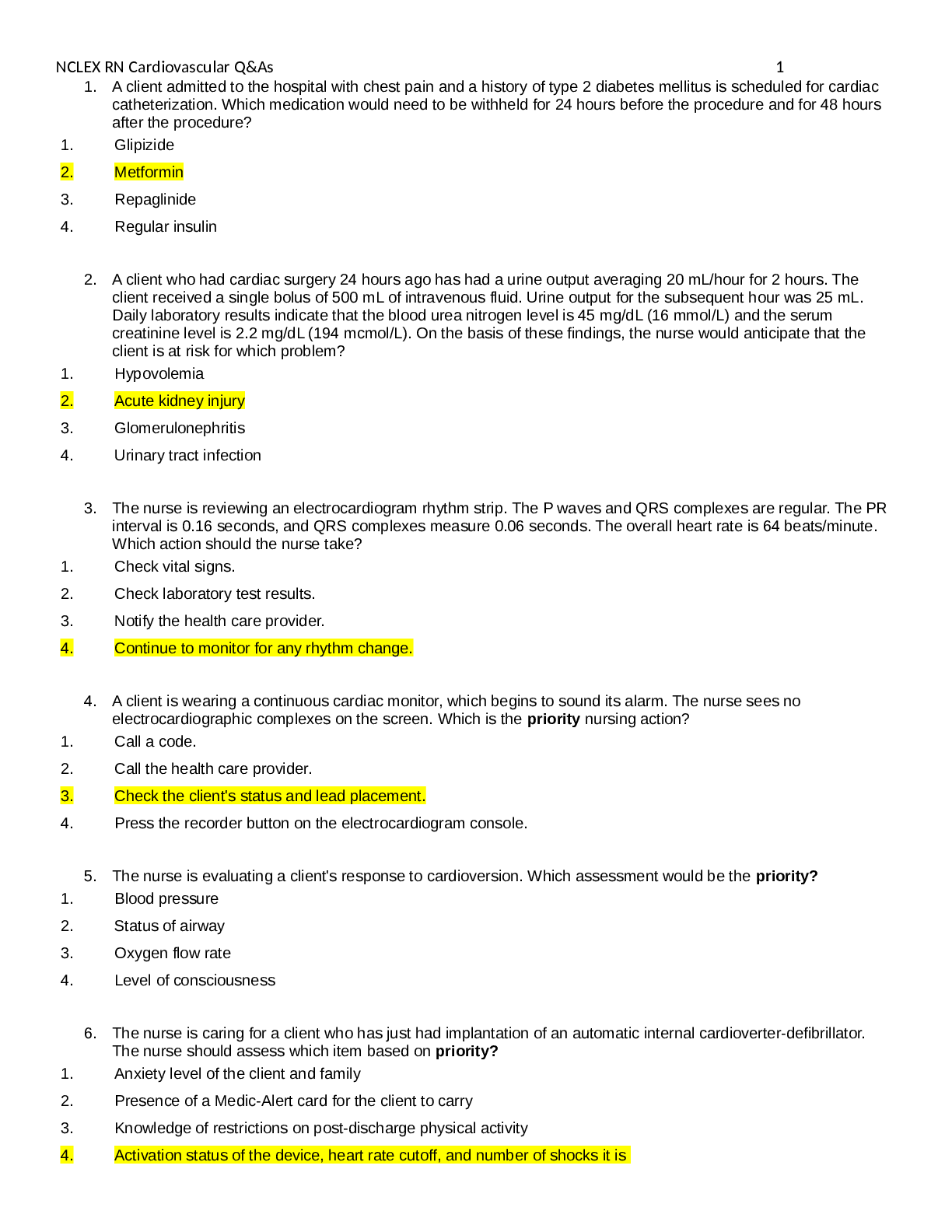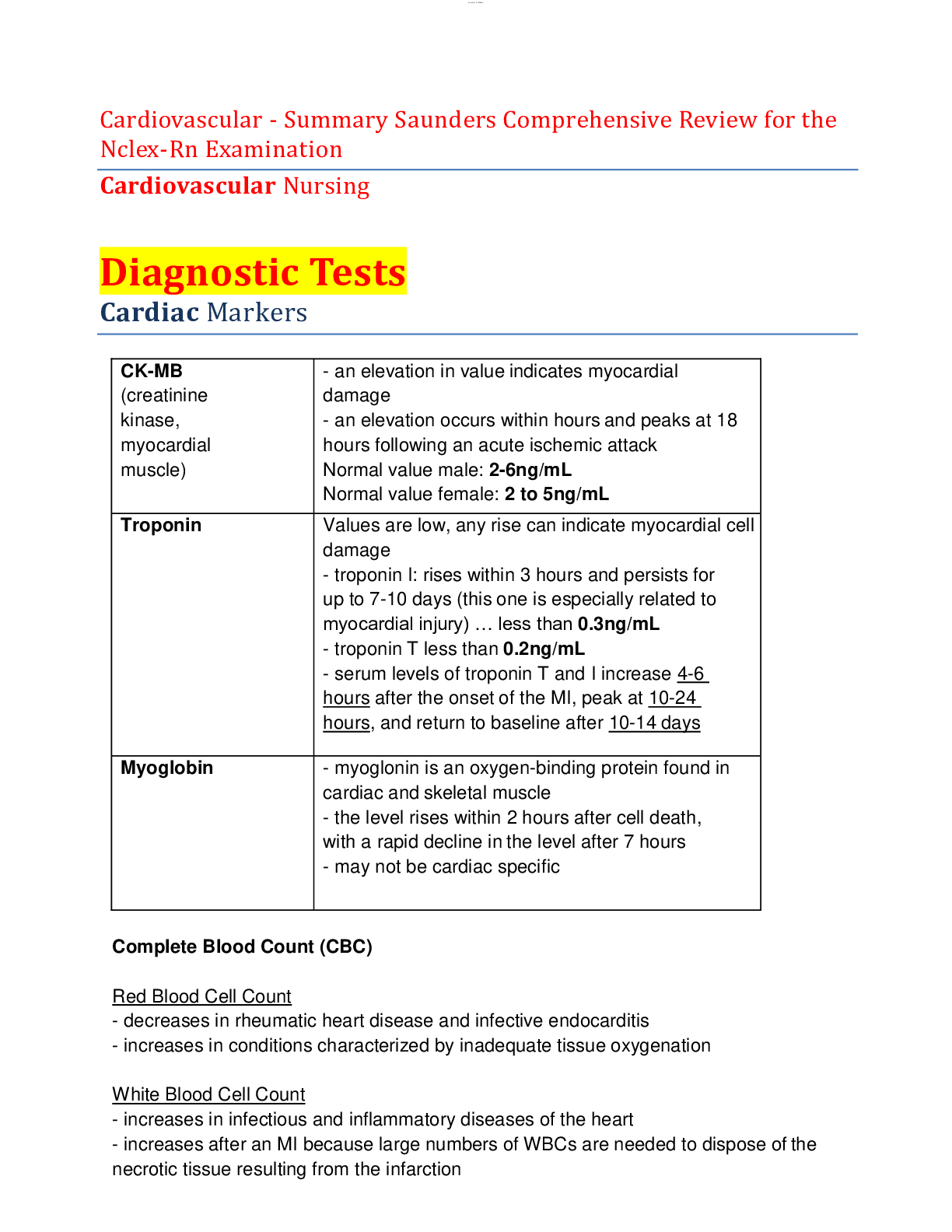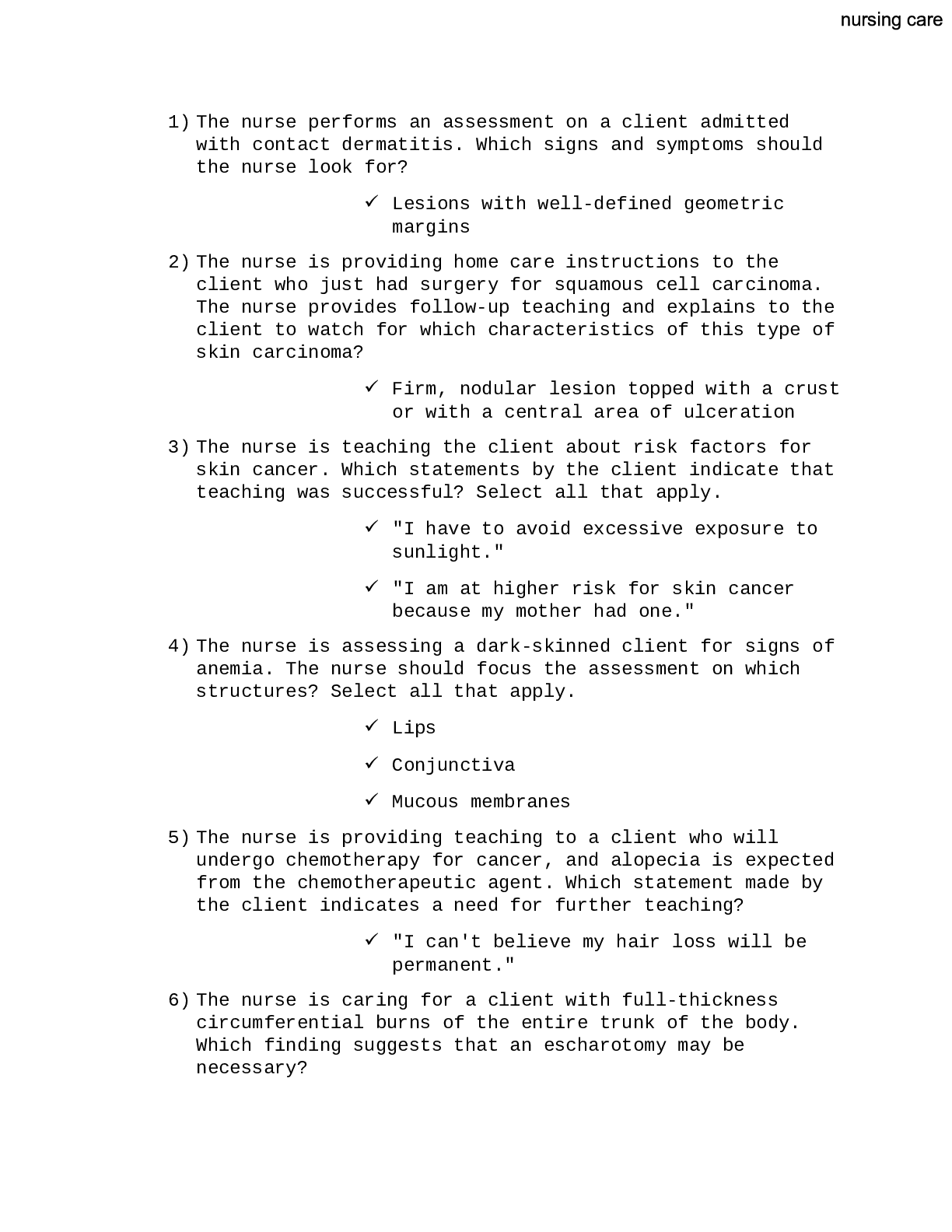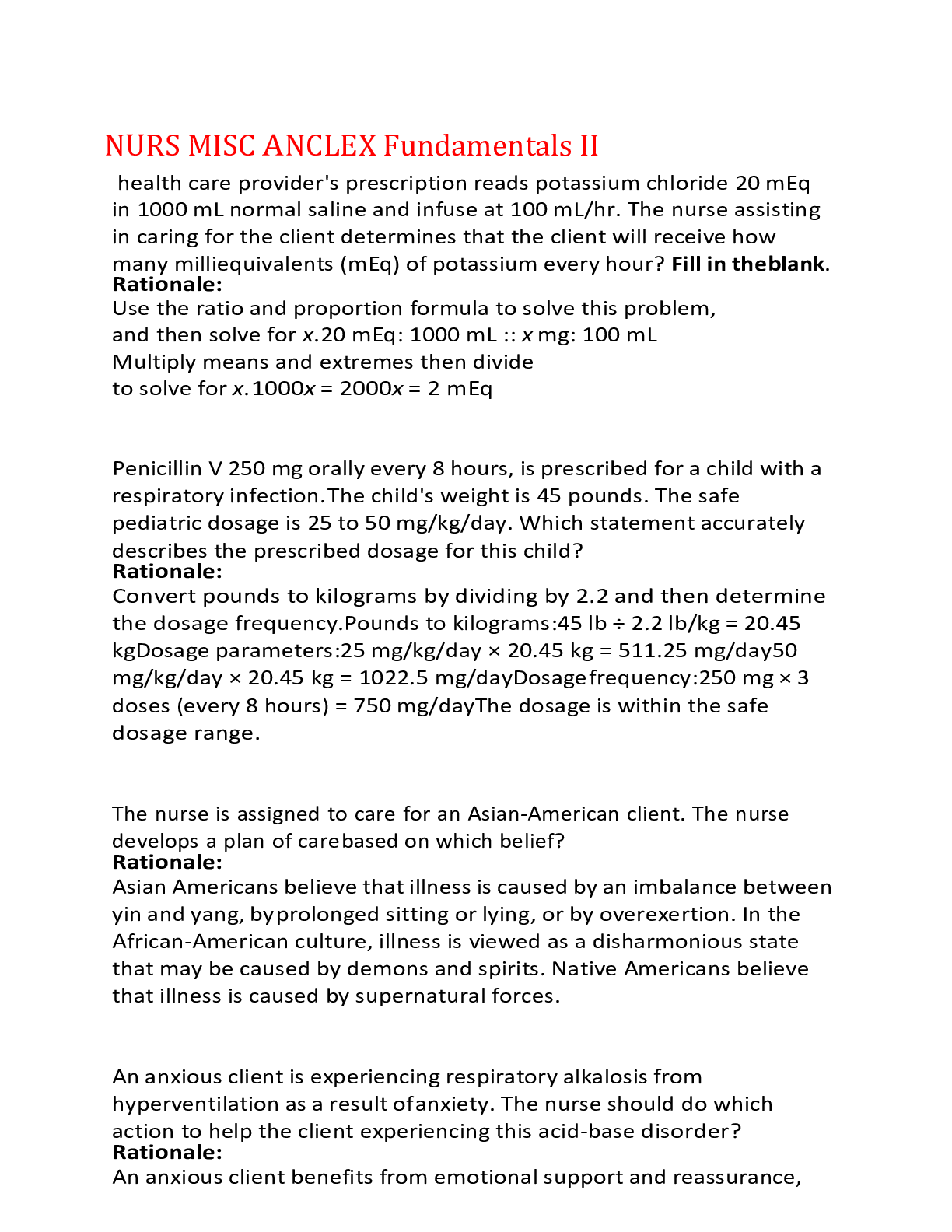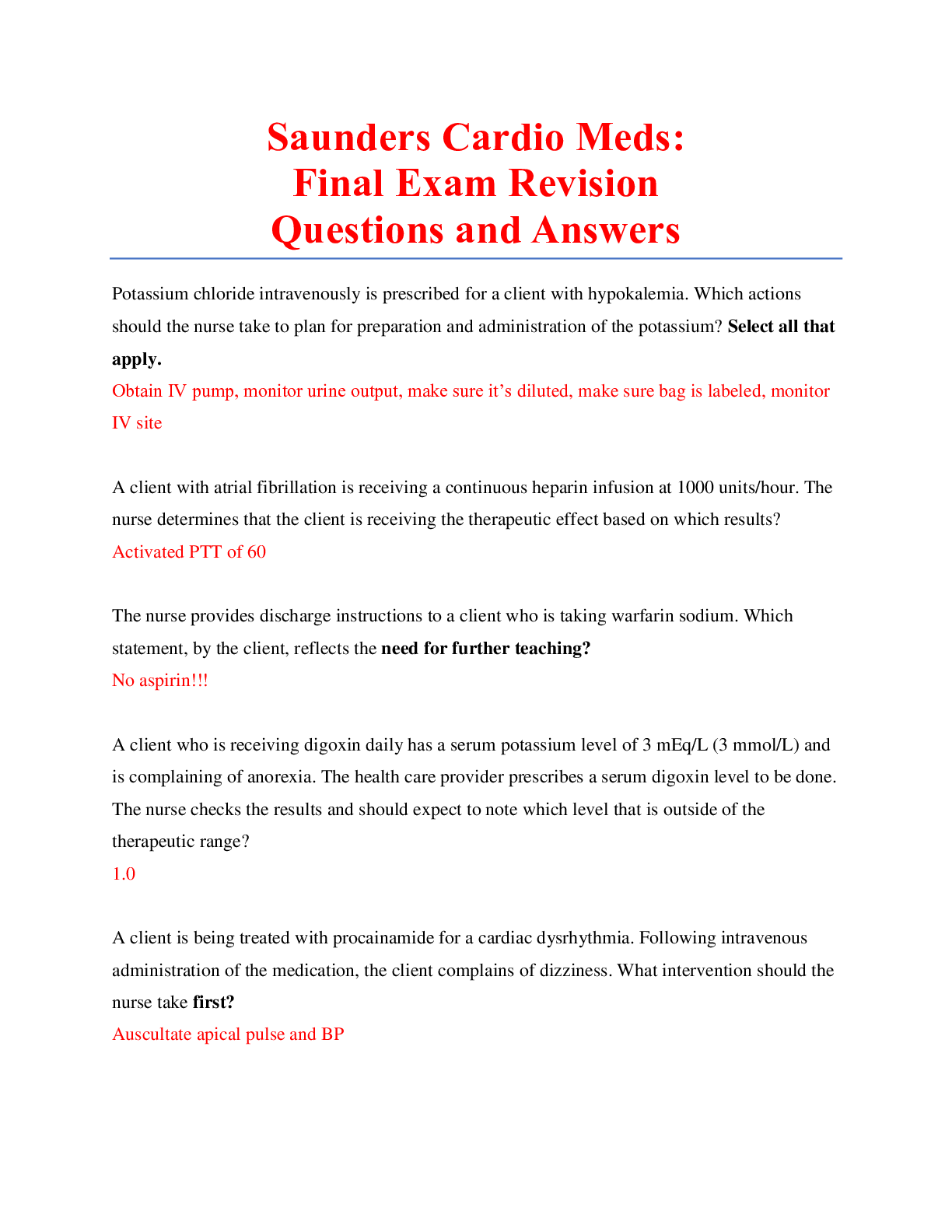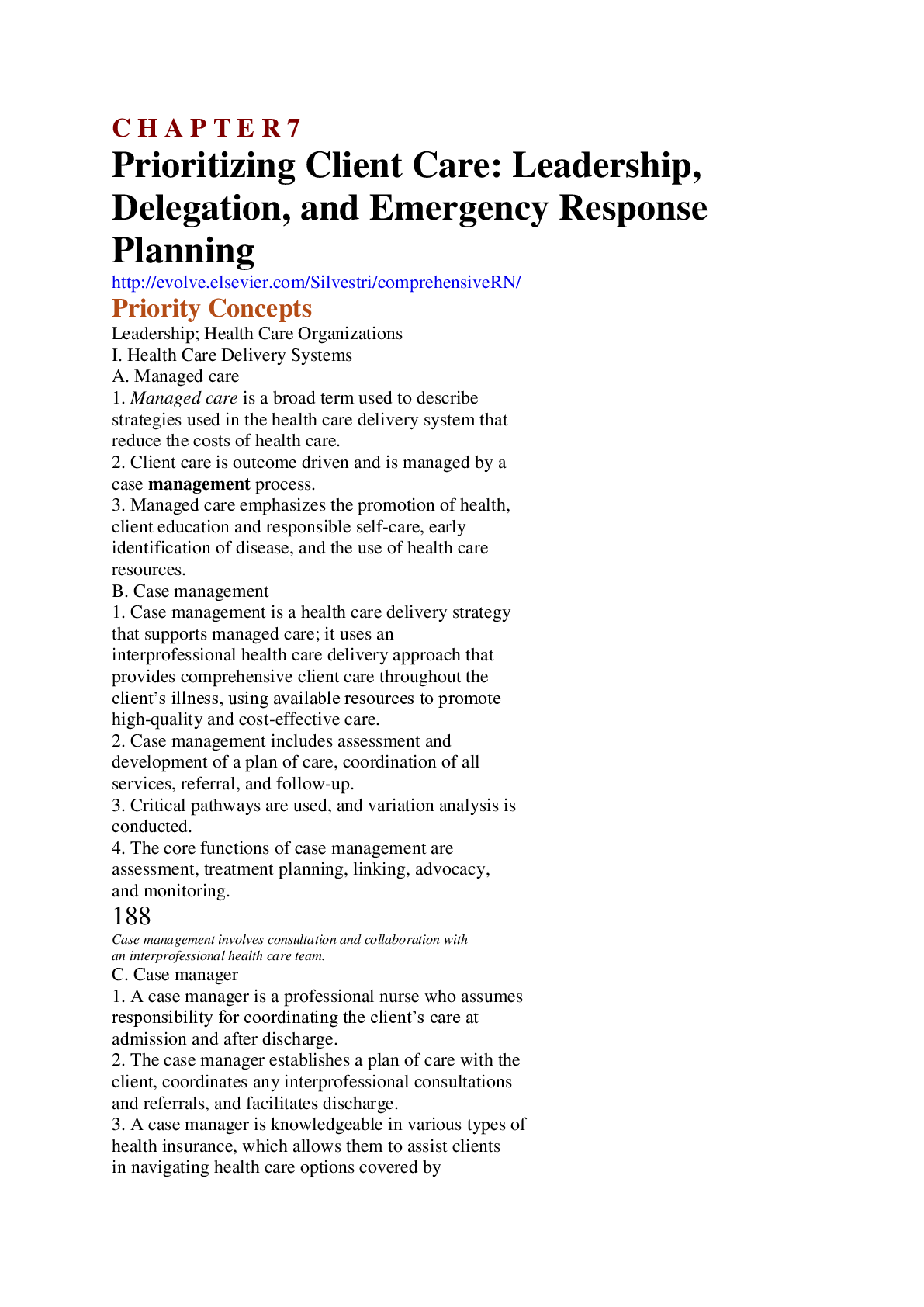*NURSING > NCLEX-RN > Chapter 3 Fluids, Electrolytes, Acid-Base Balance, and Intravenous Therapy Last minute brief study n (All)
Chapter 3 Fluids, Electrolytes, Acid-Base Balance, and Intravenous Therapy Last minute brief study notes for NCLEX.
Document Content and Description Below
Chapter 3 Fluids, Electrolytes, Acid-Base Balance, and Intravenous Therapy Objectives Theory 1. Explain the various functions fluid performs in the body. 2. Describe the body's mechanisms for flu... id regulation. 3. Review three ways in which body fluids are continually being distributed among the body's fluid compartments. 4. Distinguish the signs and symptoms of various electrolyte imbalances. 5. Discuss why older adults have more problems with fluid and electrolyte imbalances. 6. Describe the disorders that cause specific fluid and electrolyte imbalances. 7. Compare the major causes of acid-base imbalances. 8. Apply interventions to correct an acid-base imbalance. 9. Discuss the steps in managing an intravenous infusion. 10. Explain the measures used to prevent the complications of intravenous therapy. 11. Identify intravenous fluids that are isotonic and when they are used. 12. Interpret the principles of intravenous therapy. Clinical Practice 13. Assess patients for signs of dehydration. 14. Correctly assess for and identify edema and signs of overhydration. 15. Apply knowledge of normal laboratory values to recognize electrolyte imbalances. 16. Perform interventions to correct an electrolyte imbalance. 17. Determine whether a patient has an acid-base imbalance. 18. Execute measures to prevent the complications of intravenous therapy. 19. Compare interventions for the care of a patient receiving total parenteral nutrition with those for a patient undergoing intravenous therapy. Key Terms More than half of the human body's weight is water. Throughout life there is a gradual decline in the amount of body water. An infant's body is approximately 77% water, and an older adult's body is about 45% water. Women's bodies have less water than men's. The older adult and the very young are more likely to experience severe consequences with even minor changes in their fluid balance. Fatty tissue does not contain as much water as other tissues; thus the greater the amount of fat in the body, the less the percentage of body water. Maintaining a healthy weight is important in regulating the body's percentage of water. Keeping body fluids within a normal range is especially necessary, because for every cell of every organ, life processes take place within fluid. The nutrients needed for life, reproduction, and the normal functioning of a cell must be dissolved or suspended in water, and the largest part of each cell is fluid. For all of the cell's life processes to take place, there must be a continuous exchange of water, glucose, oxygen, nutrients, electrolytes, and waste products. Water in the body has four main functions: 1. Be a vehicle for the transportation of substances to and from the cells 2. Aid heat regulation by providing perspiration, which evaporates and cools the body 3. Assist in maintenance of hydrogen (H+) balance in the body 4. Serve as a medium for the enzymatic action of digestion [Show More]
Last updated: 2 years ago
Preview 1 out of 69 pages
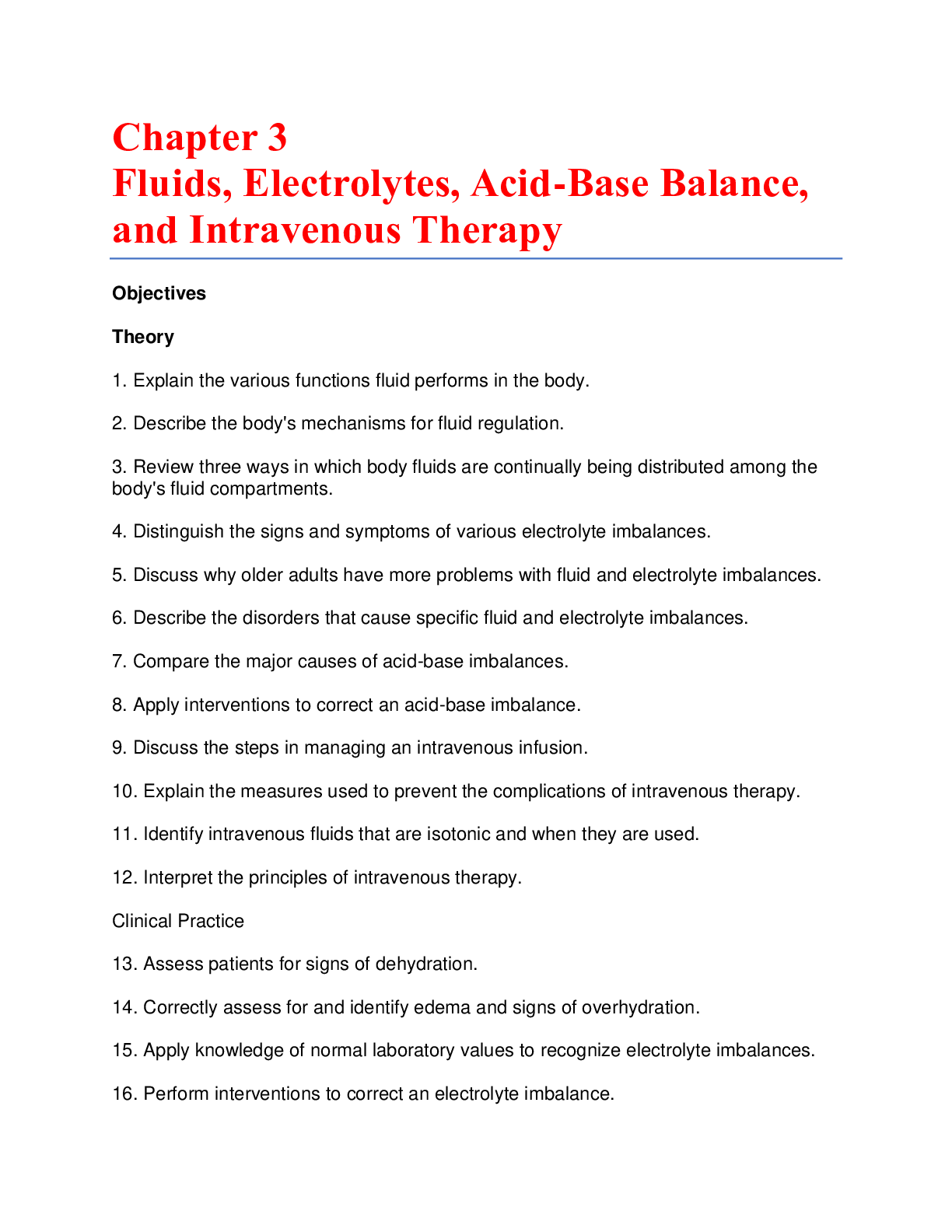
Buy this document to get the full access instantly
Instant Download Access after purchase
Buy NowInstant download
We Accept:

Reviews( 0 )
$4.00
Can't find what you want? Try our AI powered Search
Document information
Connected school, study & course
About the document
Uploaded On
Aug 24, 2020
Number of pages
69
Written in
Additional information
This document has been written for:
Uploaded
Aug 24, 2020
Downloads
0
Views
304

